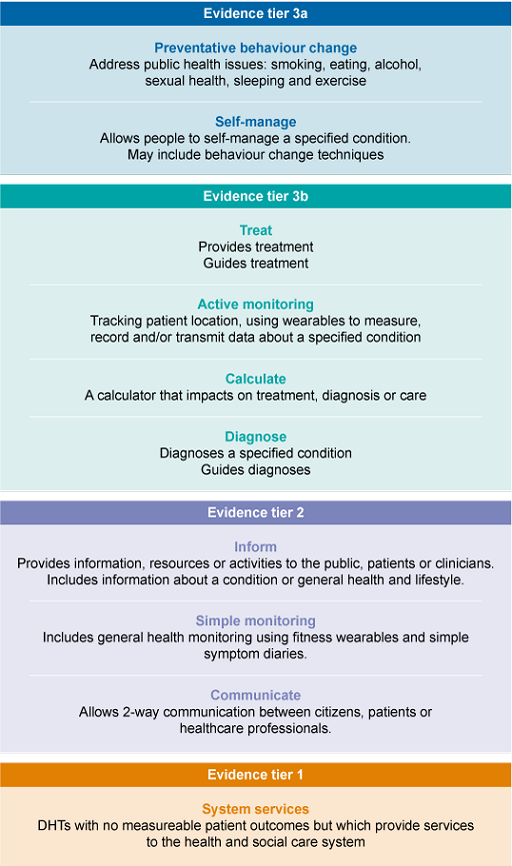1 Defining digital health and social care technology
As Figure 1 (in the Introduction) showed, there are lots of different types of technology, so it might be useful to define what we mean by digital health and social care technology before exploring particular policy in your region. This section will enable you to define the concept of digital health and social care technologies.
In 2019 the Topol Review estimated that by 2039, 90% of jobs will require digital skills (Topol, 2019). Therefore, the digital skills you are learning as you study will be valuable both now and in the future. There are many perspectives about what digital health and social care is, ranging from simple use of electronic records through to more complex artificial intelligence and robotics in surgery.
You will probably have heard a lot of different terms to describe digital health and social care technology. For example, the Digital Health & Care Institute (2018) use the term ‘Health Information Technology’ (HIT), The Welsh Government (2015), National Institute for Health and Care Excellence (NICE) (2019) and King’s Fund (in Macguire et al., 2019) use phrases such as ‘digital technology’, ‘digital health technologies’ (DHT) and ‘digital change’ while NICE (2019) outline quality standards requirements for the use of such technology, including information about how to evidence effectiveness and economic benefits (cost versus benefit).
Figure 2 provides a summary of the different ‘levels’ and ‘purpose’ of digital technology.
Activity 1 What do you understand by digital health and social care?
The following video was produced by The Health and Social Care Alliance Scotland in 2016 to explain digital health options. You may already receive some of these services. It also invites feedback from viewers. Watch it and then answer the question below.

Transcript: Video 1 What is digital health?
Think about the term ‘digital health and social care technology’ and write down your own definition of this from your own perspective.
Discussion
Different people will have different definitions that reflect the wider context of digital health and social care. Your definition might have come from your own experience as an individual consumer of health care or from your work. Definitions will probably have included the internet, mobile or smartphone applications, electronic records or even games.

